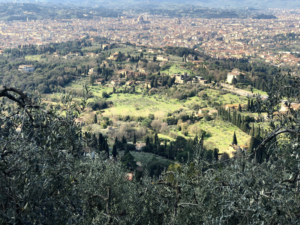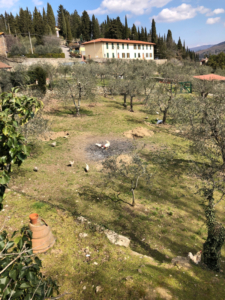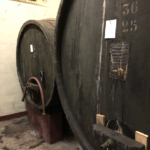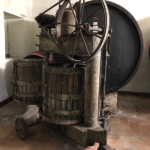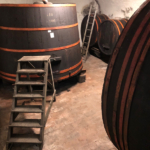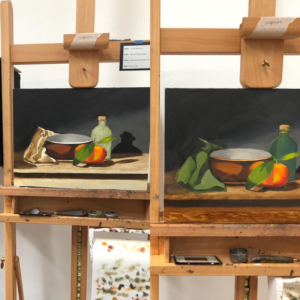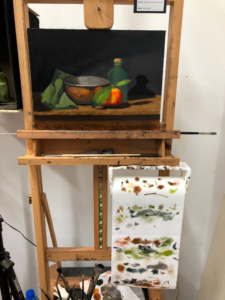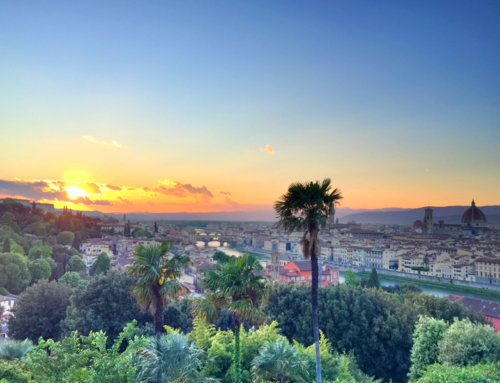The birthplace of the Renaissance takes its art very seriously — as well it should. The methods are not random; they are time-tested, and they work.
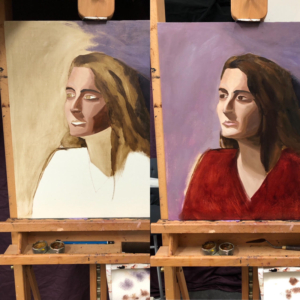
Last week’s progress on my portrait. Stay tuned see where it goes …
I’ve been working on a portrait and a still life, both in the sight-size method. This method allows you to measure everything to ensure you’re getting it right. But you’re also training your eye, thinking in value before color.
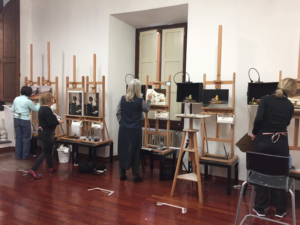
Inside the studio. Here it’s called the “atelier.”
Because it’s a formula, I’m finding it so relaxing. You aren’t inventing anything. Don’t get me wrong: It’s hard. And when you’re off in your measurements, it can be frustrating, but you have a type of guidebook in the formulas to get you back on track, if that makes sense.
This is how it was done in the Renaissance. And in Florence, this is the kind of art that is taught and respected. To get my fix of modern art, I’ll need to head elsewhere. But for now, I’m perfectly happy right where I am: studying in a historic method and walking along the streets with the ghosts of so many great minds and the art they left behind.
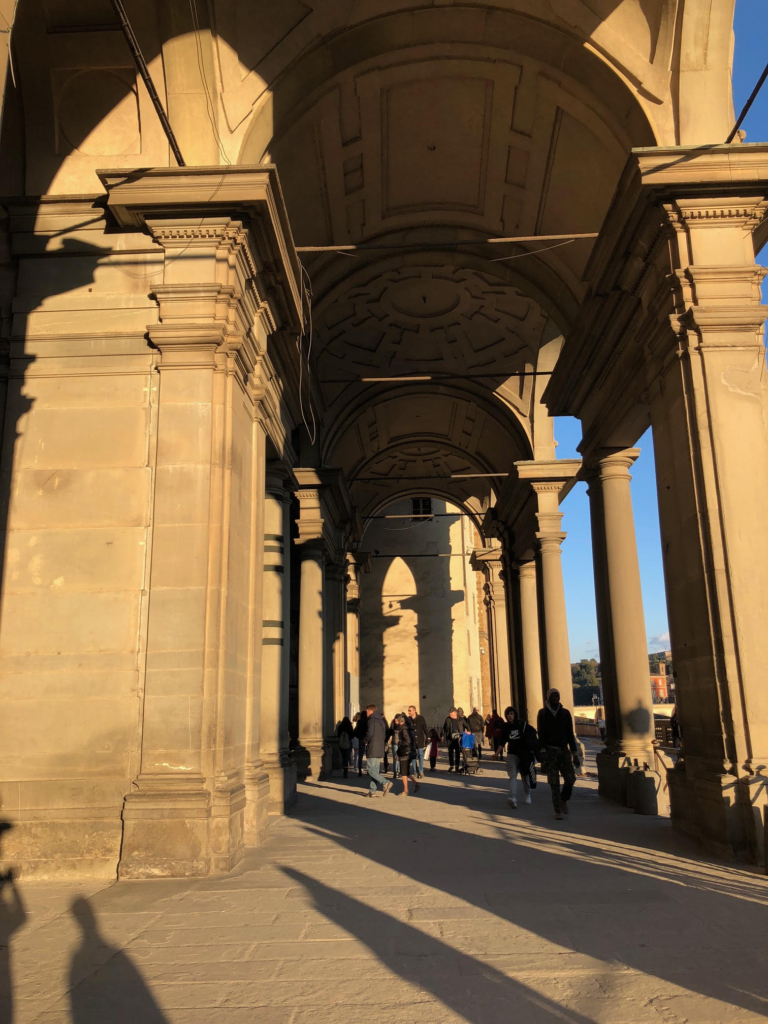
My evening walks after class are magic.
I’m in class all day, from 10 a.m. until 5 p.m. I even went in on Saturday for several hours, because when I thought about what I really wanted to do, the answer was paint.
- From Sunday’s excursion into the countryside: looking down on Florence.
- The rewarding hikes of Tuscany.
But you’ll happy to know, I went on an excursion Sunday into the countryside. I do love the countryside so much. It’s the place where I feel I can think.
We even went to a very rustic olive oil and vineyard farm. It was nice to see a farm that wasn’t designed to host tourists.
- Old-school rustic winery
- Old school winepress — don’t worry, it’s retired!
- It feels a little bit like stepping back in time. These barrels are still used.
But after hours, I love wandering the streets, popping into old churches, discovering masterpieces.
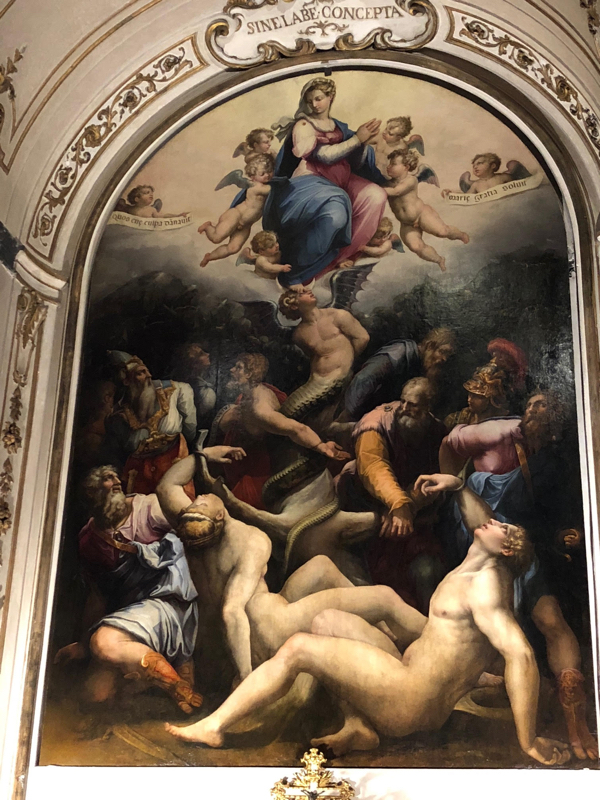
Finding masterpieces in little churches along the way.
I’m looking forward to more learning and exploration in week two. I hope you’ll join me! Let’s chat about it on Facebook and Instagram.
- Last week’s progress on my still life.
- … and Saturday’s progress.


